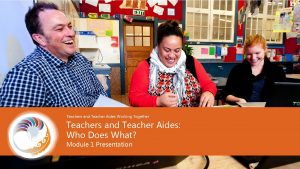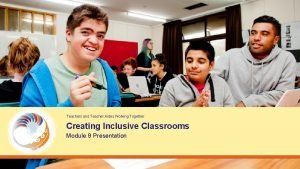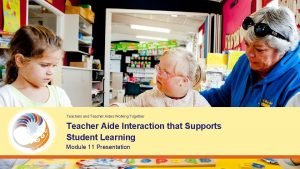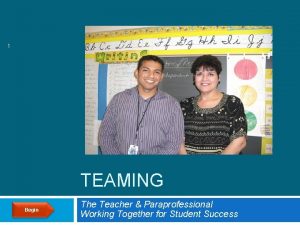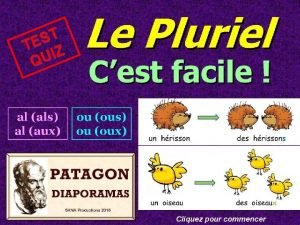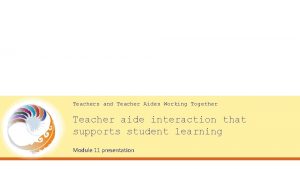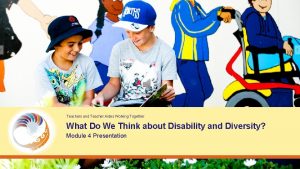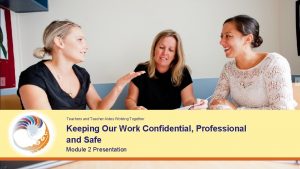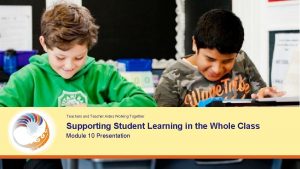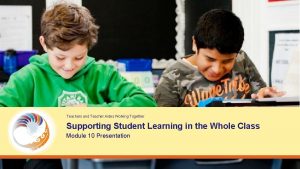Teachers and Teacher Aides Working Together Teacher Aide










- Slides: 10

Teachers and Teacher Aides Working Together Teacher Aide Interaction that Supports Student Learning Module 11 Presentation

Introducing the module This module is about the type of talk that helps students to develop as active and engaged learners. It is for both teachers and teacher aides. Please take your time to think and reflect.

Why this module? We want all students to be actively engaged in their learning. Actively engaged learners feel ownership of their learning and take an active part in the classroom community. Language is the foundation of all learning. How would you describe an ‘active learner’? Why do you think purposeful talk is so important to learning?

Why this module? Research shows that adults often dominate classroom talk and oversimplify questions and tasks. Who does the most talking in your classroom? How do you help students to think through problems?

What is purposeful learning talk? In a classroom community of learners, student talk dominates. Purposeful learning talk: • requires teachers and teacher aides to prompt students to explore new ideas • is focused on the intended learning.

Asking purposeful questions Purposeful questions: • focus on the learning • require the respondent to think. Avoid asking questions that are too easy or contain the answer. Try not to ask too many questions.

Asking purposeful questions Purposeful questions have specific purposes that vary throughout a lesson, for example: • Beginning: helping students remember what they already know that can help with the learning • During: helping students clarify their thinking and compare it with other people’s ideas • At the end: helping students reflect on what they have learned. Brainstorm some questions that could be used for these different purposes. Then review your questions. Are they likely to open up learning conversations?

Purposeful waiting Wait time is a period of silence between a question and a response. It’s best to wait at least three seconds, but we often don’t wait that long. Using wait time shows that we expect a response and gives students time to think.

Working together Purposeful classroom talk requires partnership, communication and planning! Teacher aides need to plan what they will say and the questions they will ask to get students talking about the intended learning. Working together, teachers and teacher aides can support all students to engage actively in learning.

Next Step Ngā mihi! It’s time to choose an activity from the workbook for this module. Download the workbook for this module at: teachersandteacheraides. tki. org. nz/suppo rting-student-learning/Module-11 To find out more about Teachers and Teacher Aides Working Together and to access the other modules go to: teachersandteacheraides. tki. org. nz We wish you well in your learning!
 Teachers and teacher aides working together
Teachers and teacher aides working together Teachers and teacher aides working together
Teachers and teacher aides working together Teachers and teacher aides working together
Teachers and teacher aides working together Paraprofessionals and teachers working together
Paraprofessionals and teachers working together Un éventail des éventaux
Un éventail des éventaux Kim kroll teachers pay teachers
Kim kroll teachers pay teachers Hot working and cold working difference
Hot working and cold working difference Hot working of metals
Hot working of metals Differentiate between hot working and cold working
Differentiate between hot working and cold working Proses pembentukan logam
Proses pembentukan logam Identify the cell
Identify the cell
